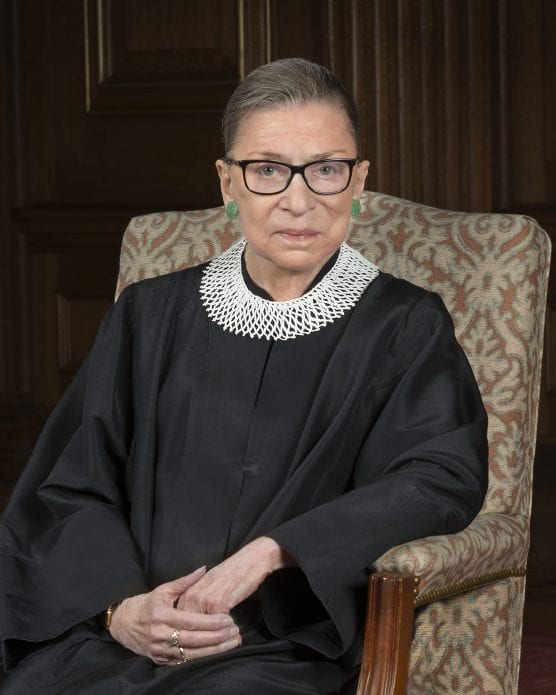U.S. Supreme Court Justice Ruth Bader Ginsburg died Friday at her family home in Washington of complications from pancreatic cancer, the high court said. She was 87.
As recently as July 17, as she was fighting her fifth cancer battle, Ginsburg vowed she had no plans to retire.
U.S. Supreme Court Justice Ruth Bader Ginsburg died Friday at her family home in Washington of complications from pancreatic cancer, the high court said. She was 87.
“Our nation has lost a jurist of historic stature,” Chief Justice John Roberts said in a statement. “Our nation has lost a jurist of historic stature. We at the Supreme Court have lost a cherished colleague. Today we mourn, but with confidence that future generations will remember Ruth Bader Ginsburg as we knew her — a tireless and resolute champion of justice.”
Ginsburg was appointed to the high court by former President Bill Clinton in 1993, serving previously on the U.S. Court of Appeals. Over 159 law clerks worked under Ginsburg’s tutelage at the court, where she served for 27 years.
A prolific advocate for women’s rights, in 1971 Ginsburg helped launch the Women’s Rights Project of the American Civil Liberties Union and was the group’s general counsel. She then served on the ACLU’s national board of directors until 1980, when she was appointed to the U.S. Court of Appeals.
The Brooklyn, New York, native received a bachelor’s degree from Cornell University in 1954 — the same year she married her husband, Martin D. Ginsburg — before moving onto Harvard Law School in 1956.
Ginsburg then received a law degree from Columbia Law School and clerked for Southern District of New York Judge Edmund L. Palmieri from 1959 to 1961. The next two years she was a research associate at the Columbia Law School Project on International Procedure before coming associate director of the program. She taught law for nine years at Rutgers’ University School of Law.
Ginsburg struggled with pancreatic cancer and was hospitalized multiple times in the last year. In August 2019, the high court announced she had undergone three weeks of radiation therapy for a tumor on her pancreas discovered during a blood test the previous month.
The court said treatment caused Ginsburg to cancel her yearly trip to Santa Fe but otherwise she focused on work.
Most recently, she was believed to have an infection and was admitted to a Washington hospital for fever and chills before being admitted to Johns Hopkins Hospital in Baltimore.
The stay at Johns Hopkins marked the third stay at an area hospital in eight months. In November 2019, she went to the hospital with the complaints of chills and participated in oral arguments by telephone this past May after treatment for a benign gallbladder condition.
Anthony D. Romero, the ACLU’s executive director, said in a statement Friday that few people have “such a dramatic and lasting effect of a particular area of law” that Ginsburg had — noting her work for the organization in the 1970s.
“By 1974, the Women’s Rights Project and ACLU affiliates had participated in over 300 sex discrimination cases; between 1969 and 1980 the ACLU participated in 66% of gender discrimination cases decided by the Supreme Court,” Romero said. “In her honor, we will be dedicating the ACLU Center for Liberty as the Ruth Bader Ginsburg Liberty Center.”
This is a developing story.
This is a developing story. More details to come.
— By Jon Parton, CNS
Like this:
Like Loading...
Related





 Tweet This
Tweet This Facebook
Facebook Digg This
Digg This Bookmark
Bookmark Stumble
Stumble RSS
RSS


























REAL NAMES ONLY: All posters must use their real individual or business name. This applies equally to Twitter account holders who use a nickname.
1 Comment
My heart hurts……this is a monumental loss for women.